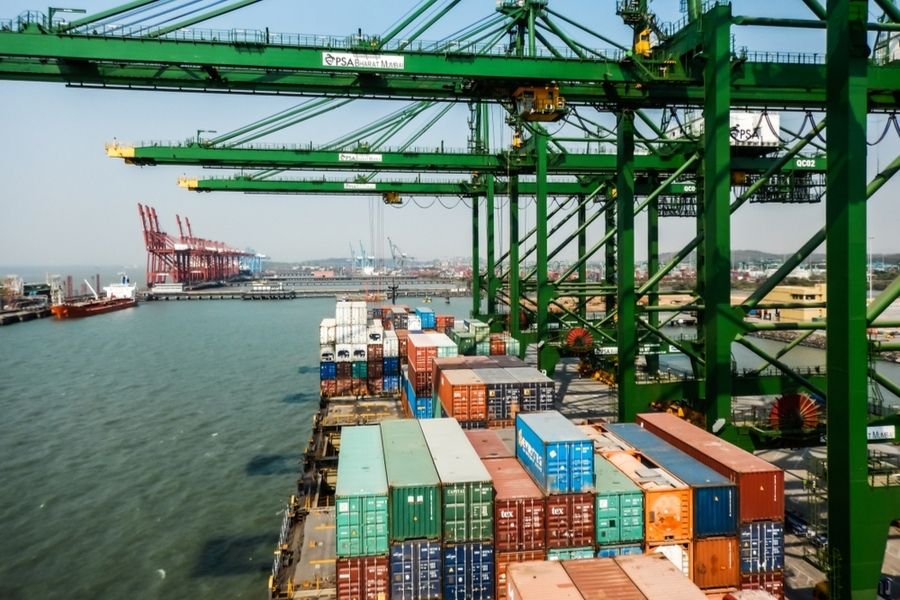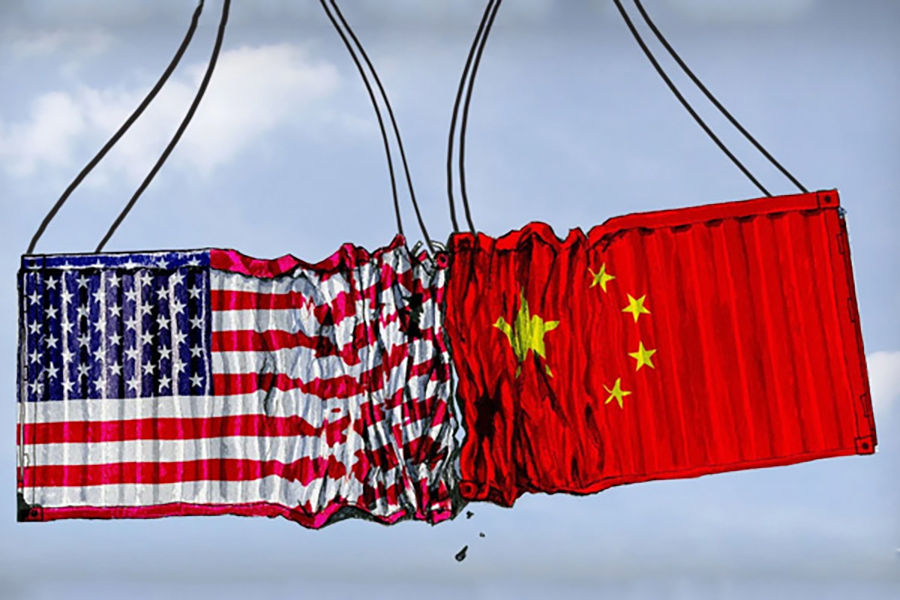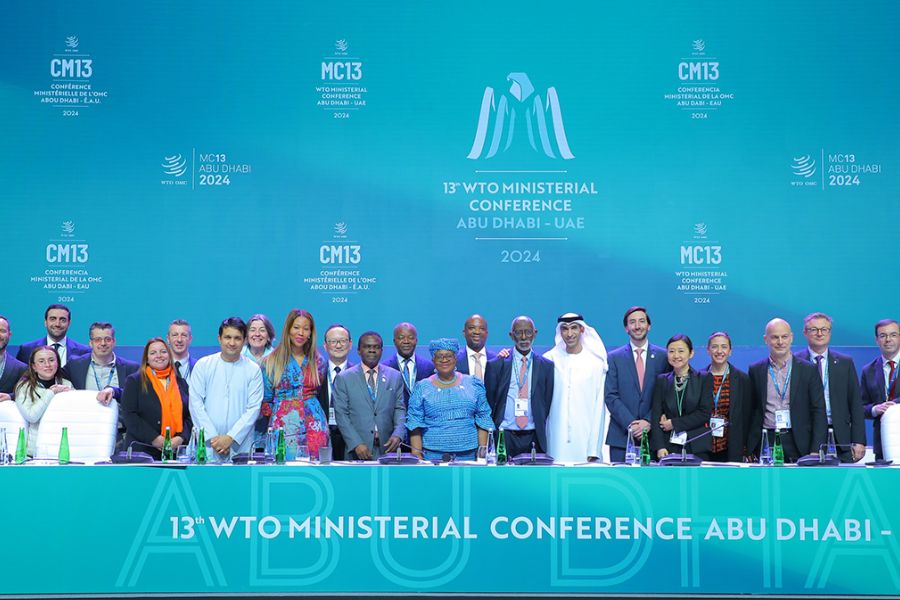Foreign Trade Policy 2023: A new era for India’s trade?
On Friday, Commerce and Industry Minister Piyush Goyal unveiled a ’dynamic and responsive’ Foreign Trade Policy 2023. After two years, the new FTP carries objective of raising the country’s outward shipments to US$ 2 trillion by 2030, through various initiatives that include pushing rupee trade and incentivising e-commerce exports.
Schemes and measures announced in FTP 2023 indicate that India wants to encourage production of quality goods and services to enhance the spirit of export competitiveness. A comprehensive analysis of the trade policy highlights India’s intention to facilitate greater trade, boost manufacturing and making the rupee a global currency.

Photo Source: Shutterstock
New Delhi, April 3: After a prolonged wait, India’s renewed Foreign Trade Policy or FTP is finally here. The latest FTP, a comprehensive set of documents, holds a pool of measures to expand country’s exports to US$ 2 trillion in less than a decade. India had to put its trade policies on hold for three years due to unprecedented turn of events since the onset of COVID-19, but on March 30, Director General of Foreign Trade (DGFT) Santosh Sarangi announced new guidelines.
According to the Foreign Trade Development and Regulation Act, 1992, the government is required to formulate, implement and monitor trade policies to boost exports, facilitate imports and maintain a favourable balance of payments. The new Foreign Trade Policy 2023 came into force from April 1 and here are some of the key takeaways:
Renewed approach to exports
The key approach to the policy, as described by the government, is based on four pillars.
- Incentives to remission
- Export promotion through collaboration- exporters, states, districts and Indian missions
- Ease of doing business in transaction cost and e-initiatives
- Emerging areas- E-commerce developing districts as export hubs and streamlining SCOMET policy.
Union Minister of Commerce and Industry Piyush Goyal, at the unveiling of FTP 2023, announced that India’s overall exports, including services and merchandise exports, have already crossed US$ 750 billion and are expected to cross US$ 760 billion by the end of the year. Despite developed economies facing challenging times, India has managed to leverage the tumultuous situation into a mine of opportunities.
[soliloquy id=”21555″]
New Hubs To Magnify Exports
The government, under the foreign trade policy 2023, has announced 4 new towns, namely Faridabad, Mirzapur, Moradabad and Varanasi as Towns of Exports Excellence. These four new destinations will be joining the list of existing 39 such towns. The designated towns will have access to export promotion funds under the Market Access Initiative (MAI) scheme.
Faridabad will be the town of export excellence for apparels; Moradabad will be the town of export excellence for handicrafts; Mirzapur will be the town of export excellence for handmade carpet and dari and Varanasi will be the town of export excellence for handloom and handicrafts.
Specified towns with a goods turnover of Rs. 750 crores or more may be notified as TEE based on its export potential. Under TEE, common service providers in the areas will be considered eligible for Export Promotion Capital Goods (EPCG) scheme. This facility helps in increasing the entire cluster’s competitiveness by enabling common use of capital goods for exports. EPCG Scheme allows imports of capital goods for pre-production, production and post-production at zero customs duty.
India’s foreign trade policy aspires to build partnership with the state governments. It aims to identify potential export products and services in all districts and create institutional mechanisms to promote them. Export-worthy products and services will be identified through and institutional mechanism- State Export Promotion Committee and District Export Promotion Committee. District Export Action Plans (DEAPs) will be prepared for each district, which will provide a detailed roadmap for promoting identified products and services for exports.
Remission is the way forward
The government notified the Scheme for Remission of Duties and Taxes on Exported Products (RoDTEP) and Remission of State and Central Taxes and Levies (RoSCTL) notified, with the aim to remit the taxes paid on the notified goods exported. This is in accordance with the global principle that taxes should not be exported, and has been brought in line with India’s commitments at the WTO. RoDTEP provides for rebate of all hidden Central, State, and Local duties/taxes/levies on goods exported, which have not been refunded under any other existing scheme. This includes the direct cost incurred by the exporter as well as the prior stage cumulative indirect taxes on goods. Some instances of taxes include:
i) VAT and Excise duty on the fuel used in self-incurred transportation costs; on the fuel used in generation of electricity via power plants or DG Sets; on the fuel used in running of machineries/plant;
ii. Electricity duty on purchase of electricity;
iii. Mandi Tax/ Municipal Taxes/ Property Taxes;
iv. Stamp duty on export documents;
However, the government will continue the Advance Authorisation /DFIA scheme for duty free input/raw material from overseas suppliers or through domestic suppliers. Also, it will continue the EPCG scheme that facilitates technological upgradation through duty free import or indigenous sourcing of capital goods.
Promotion of rupee trade
An important step towards internationalisation of the rupee was undertaken on July 11, 2022, when the Reserve Bank of India set up a system for settlement, invoicing and payment of exports and imports in the Indian Rupee. Until then, all settlements, invoicing and payments were done in the respective foreign currencies (US dollar, euro, British pound, Australian dollar, Canadian dollar, Singapore dollar, etc). More and more countries have shown their eagerness to utilise this mechanism since then to trade with India.
The FTP allows international trade settlement in INR and has made the necessary changes for grant of export benefits and fulfilment of Export Obligation (EO) for export realisations in the domestic currency as per the RBI. Commerce Secretary Sunil Barthwal further added that India is willing to trade in rupees with countries that have a currency failure or a dollar shortage, according to the Foreign Trade Policy.
Facilitating E-Commerce Exports
Notably, the Foreign Trade Policy (FTP) has doubled the value limit for exports through courier to Rs 10 lakh per consignment, with estimates pegging the potential of growth in e-commerce exports to US$ 200-300 billion by 2030. To spur e-commerce exports, FTP 2023 proposes to create a designated zone with a warehousing facility, to help e-commerce aggregators towards easy stocking, customs clearance and returns processing. The processing facility will be allowed for last-mile activities such as labelling, testing, and repackaging amongst others.
The government has stated that a comprehensive e-commerce policy addressing the export/import ecosystem would be announced soon, based on the recommendations of the working committee on e-commerce exports and inter-ministerial deliberations.
Merchanting Trade
In line with its aim of making India a leading merchanting trade hub, FTP 2023 has introduced slew of provisions to allow trade of restricted and prohibited items. Merchanting trade involves shipment of goods from one foreign country to another without touching Indian shores, but involving Indian intermediaries. Such a provision means a step to reduce transaction costs for smaller firms, which have a major share in India’s goods exports.
Pool of trade flexibility
The first five-year export-import (EXIM) policy of 1992 and the second in 1997-2002 aimed to remove many of the post-independence trade protectionist measures and promote India’s integration with the global economy. In 2004, the EXIM Policy was renamed FTP to adopt a comprehensive approach to India’s foreign trade. Later, FTPs were issued for 2009-14 and 2015-20. FTP 2015-20 aimed to boost India’s exports from $465 billion in 2013-14 to $900 billion by 2019-20.
Unlike the previous practice of announcing 5-year FTP, the new policy does not have an end date and will be updated periodically as per the requirement. The global economic conditions have impacted India’s trade performance as our export figures are struggling. The crux of FTP 2023 is to streamline business operations, encourage the use of the Indian rupee in cross-border trade and deepen trade relations with countries with which India enjoys a trade surplus.













Rapid fire on FTP2023 very well articulated.